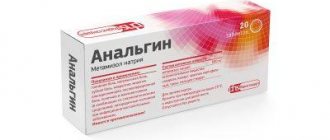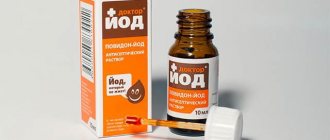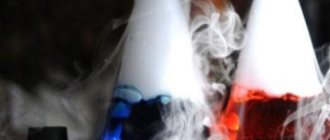Benzene poisoning is a reason to urgently seek medical help.
Benzene is an aliphatic hydrocarbon compound; it is a colorless liquid with a characteristic odor.
Source: depositphotos.com
Benzene is widely used in many industries:
- rubber;
- pharmaceutical;
- chemical;
- printing;
- paintwork.
The maximum permissible concentration of benzene in the air is 0.1 mg/l.
Causes of poisoning
Acute intoxication occurs as a result of technological accidents. Chronic poisoning is detected in people who have been in contact with a toxic substance for a long time. Benzene poisoning can occur when the substance enters the human body through the respiratory system, which leads to damage to the nervous system. The reticuloendothelial system of the bone marrow is also often affected.
In acute poisoning, symptoms of damage to the nervous system predominate. If long-term intoxication is observed, changes in the composition of the blood are added. The entry of benzene compounds into the body causes a disruption in the metabolism of B vitamins. This leads to a mutagenic, teratogenic and carcinogenic effect.
Where is benzene used?
Benzene is a colorless liquid with a rather distinct odor. It is a hydrocarbon compound and has good volatility. At temperatures above 80.5 degrees it turns into crystals. When benzene vapor is mixed with air, a mixture arises that ignites quite easily.
The substance has excellent solubility in various solvents, with the exception of water. (solvent poisoning)
Where can you find this connection? The scope of its use is quite wide.
Application:
- production of synthetic rubber, rubber, plastics,
- present in various varnishes, paints and solvents,
- used in the manufacture of certain medications,
- found in petroleum products
- present in cigarette smoke.
In modern times, benzene is most often used to obtain its derivatives, for example, ethylbenzene or isopropylbenzene.
Unfortunately, the high content of the compound in automobile fuel leads to the fact that it evaporates in large quantities into the atmosphere and then falls as part of precipitation. In addition, scientists often find this compound in various foods, which can have negative consequences for the body.
Symptoms
To make a correct diagnosis, the doctor must analyze the clinical picture of poisoning.
Acute poisoning
In acute intoxication, a large amount of a toxic substance enters the body over a short period of time. First of all, the functioning of the nervous system is disrupted. In this case, the following signs appear:
- general weakness;
- dizziness;
- noise in ears;
- euphoria, which is replaced by nausea, headaches, vomiting, and loss of coordination.
In case of mild poisoning, additional symptoms do not occur. After a certain time, the victim’s condition is restored.
In case of moderate poisoning, a person experiences increased anxiety. In addition, pale skin, increased breathing, and decreased temperature occur. The victim's pulse also weakens. If help is not provided in time, convulsions may occur, after which the person falls into a coma.
In some cases, this type of poisoning goes away without a trace. However, sometimes astheno-vegetative syndrome develops after it. In this case, the transmission of nerve impulses to tissues is disrupted.
In case of severe poisoning, fainting occurs and a toxic coma occurs. Due to paralysis of the respiratory muscles, the patient may stop breathing. Most often, complex degrees of intoxication lead to death.
Also, if benzene and its derivatives enter the body, the following symptoms may occur:
- Oxygen starvation. It is caused by the synthesis of methemoglobin in the blood. This substance does not bind to oxygen and prevents it from entering tissues. As a result, hypoxia develops. Nerve cells and the heart are more susceptible to oxygen starvation.
- Anemia. Benzene leads to the destruction of red blood cells. Therefore, intoxication often causes anemia.
- Cough, sore throat, sneezing. These signs are associated with irritation of the respiratory system.
- The appearance of ulcerative defects and hemorrhages on the skin and mucous membranes. This symptom is due to vascular damage.
- Blood in urine. This symptom indicates damage to the genitourinary system. Cystitis usually occurs, which is accompanied by hemorrhages or ulcerative lesions of the bladder.
Work ability examination
If an employee of a hazardous workshop has been subjected to occupational pathology, an assessment of his level of health is necessary. As a rule, a mild degree has no effect, recovery occurs quickly.
If moderate intoxication is diagnosed, recovery requires 1–2 weeks. Therefore, sick leave is issued, but no disability is noted.
The classification of benzene poisoning also includes a severe form, usually leading to disability due to central nervous system disorders. The group is established by decision of MSEC.
The nature of hematological changes and the presence of diseases of other systems are taken into account:
- Leukopenia up to 4.0–3.0*109/l requires a temporary transition to light work for up to 2 months. In the future, a person can return to production if sanitary hygiene is observed.
- At stage 2 with pronounced consequences, work in harmful conditions is strictly prohibited. As a rule, disability group 3 is assigned, and a temporary pension is paid during the requalification period.
- Disability group 2 includes patients susceptible to severe benzene poisoning. Professional history is taken into account - at least 10 years of experience, presence in workshops where the maximum permissible concentration of a chemical compound is exceeded 3 or more times.
Latent accumulation of toxins continues for up to 15 years. And at any time during this period a clinical picture may appear.
First aid for poisoning
To avoid serious consequences, it is very important to provide first aid to the patient. To do this, it is necessary to immediately stop the victim’s contact with the chemical. To do this, the person needs to be taken out into the fresh air. If this cannot be done, it is necessary to open windows and doors to ensure natural ventilation of the room.
If a toxic substance comes into contact with the skin, it should be washed with plenty of running water. You can also use a 1% sodium bicarbonate solution for this purpose. To do this, dissolve 1 small spoon of baking soda in 500 ml of water.
A little chemistry
Benzopyrene is an aromatic carbohydrate consisting of five benzene rings. In general terms, the formula of benzopyrene resembles the Olympic rings.
You might be interested to know that the “poor cousin” of benzopyrene, which has only two benzene rings, is naphthalene! But today we are not talking about the formidable moth fighter, but about his more poisonous brother.
Benzopyrene is a dangerous poison. According to Russian standards, no more than 0.001 grams of this substance are allowed per 1 kilogram of food. And, by the way, Russian-made sprats are the safest, since the appropriate standards are observed in the production of canned food.
Treatment for poisoning
To cope with the symptoms of poisoning and avoid negative health consequences, it is very important to choose the right treatment. Only a doctor can do this.
Acute poisoning
In case of acute intoxication of the body, therapeutic measures are aimed at restoring the functioning of organs and systems. To do this, the following actions are carried out:
- detoxification therapy;
- normalization of heart rate;
- elimination of symptoms of seizures;
- metabolic, oxygen and antioxidant therapy;
- elimination of breathing disorders.
Chronic poisoning
In case of prolonged contact with a toxic substance, the following measures must be taken:
- avoiding contact with benzene;
- use of vitamins - vitamins B and PP are especially important;
- plasma transfusion, use of blood products;
- antioxidant therapy;
- the use of drugs to normalize blood circulation;
- use of medications to protect the liver;
- metabolic therapy for the heart and brain.
Symptoms of chronic intoxication
A person suffers from insomnia, fatigue, weakness, becomes irritable, noises appear in the ears and head, and an increase in heart rate is observed. Nausea, vomiting, and bone pain are gradually added. Bleeding increases (from the nose, in the uterus), and periodontal disease occurs. Anemia is also observed, accompanied by pallor, decreased physical and mental performance.
When the disease is advanced, tremor (trembling of the limbs), muscle cramps, impaired speech and motor coordination, and loss of sensitivity may develop. It is also possible that the liver will become enlarged, the appearance of cirrhosis, disruption of the gastrointestinal tract, hypertension, and increased heart rate. Women may experience menstrual irregularities.
As a strong carcinogen, hydrocarbons are capable of changing the composition of blood cells. For example, leukemia may develop. In case of chronic poisoning, the consequences cannot be avoided even by employees who have left production.
Signs of chronic benzene poisoning
Consequences after poisoning
Severe forms of acute poisoning quite often develop rapidly and lead to the death of the patient. With mild to moderate intoxication, there is a risk of developing the following consequences:
- anemia;
- pneumonia;
- cystitis;
- asthenovegetative syndrome.
Chronic intoxication has more severe consequences. These include the following:
- bone marrow pathologies;
- myelodysplastic syndrome;
- leukemia;
- aplastic anemia;
- infertility.
Use by drug addicts
Persons who are prescribed benzodiazepines for therapeutic purposes rarely intentionally increase the dosage of the drug or begin to use it for narcotic purposes, provided that the treatment regimen recommended by the specialist is followed. Non-medical use of benzodiazepines is usually observed among young people, among teenagers and young adults who want to experience the “high” of pharmaceutical drug addiction. The state of euphoria that occurs with high doses of the drug quickly leads to inhibition of the central nervous system.
Drug addicts begin taking benzodiazepines with doses that are 5-10 times higher than therapeutic doses. The first signs of severe dependence on drugs are observed after 4-6 weeks. Drug addicts rarely use one pharmaceutical drug. Most often, benzodiazepines are combined with alcohol and psychotropic drugs to enhance pleasant sensations and hallucinatory reactions.
The percentage of benzodiazepine use is highest in environments where addicts use hard drugs. Approximately 50% of patients in drug treatment clinics who have undergone treatment for drug addiction to cocaine and heroin are prone to using benzodiazepines after discharge from hospital.
Prevention of poisoning
To prevent benzene poisoning, it is very important to follow safety rules when working with the toxic substance. Employees who are forced to come into contact with this chemical element must undergo systematic examinations by a therapist and a neurologist.
If there are appropriate indications, people are referred for consultation to other specialists - a hematologist, a nephrologist. The help of a gynecologist or hepatologist may also be required. During each medical examination, a blood test is taken.
There are certain categories of people who are prohibited from coming into contact with benzene. These include people who have the following disorders:
- epilepsy;
- serious neurological pathologies;
- organic lesions of the nervous system;
- any forms of anemia with a hemoglobin level less than 60 g/l;
- all types of hemorrhagic diathesis;
- liver pathologies with serious impairments to its functioning;
- kidney diseases.
Benzene poisoning is a serious disorder that results in negative health consequences. To avoid complications and cope with the symptoms of the pathology, it is important to consult a doctor as soon as possible.
What is it and features
Benzene is a toxic, flammable compound. It surrounds us everywhere in the form of emissions from coke plants and oil refineries. Every schoolchild knows about the dangers of such emissions, but this is not the main health threat. Being in an atmosphere saturated with benzene is much worse. Avoiding such situations can be problematic.
Benzene is a component of rubber, plastic, rubber, motor fuel, and solvent.
Today, the compound is most often used in the production of varnishes and paints, so anyone who has started renovations in an apartment can become a victim of poisoning. Also at risk are those who are in close proximity to burning plastic.
Disease history
Important questions that a doctor should ask a patient when taking a medical history:
- How many tablets were taken? What type of preparation?
- When did the reception take place? Is the drug used at once or in several approaches?
- Has the patient also taken alcohol, drugs, or other pills?
- Did the patient vomit? Was there an attempt to induce vomiting?
- Did the victim take medical activated charcoal?
- Circumstances of admission. Was it done on purpose (suicidal intent) or was it an accident?










